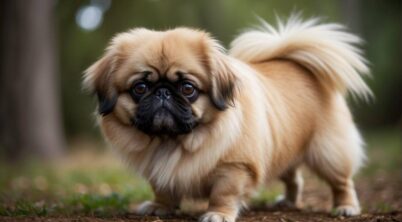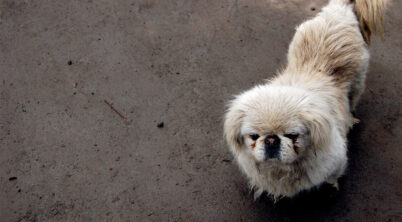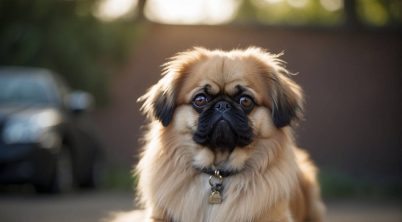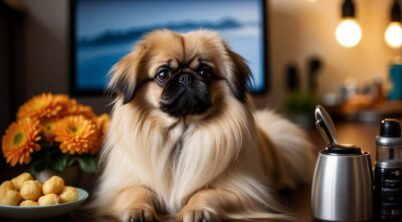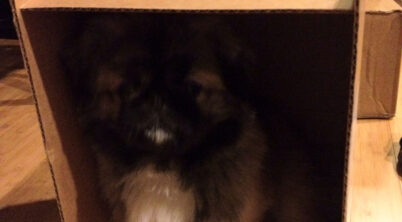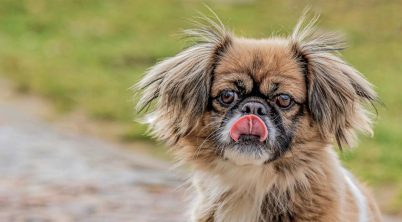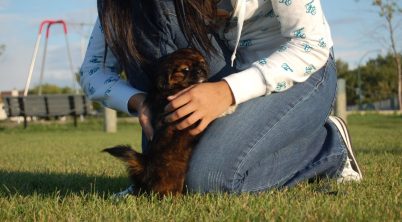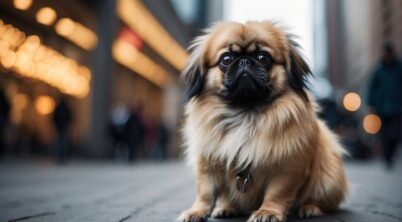The Pekingese is a small dog breed with a heritage that dates back to ancient China. Known for their confident and regal bearing, Pekingese have a distinctive physical appearance characterized by their compact, stocky build and a unique rolling gait. They are a toy breed, holding a special place in the hearts of those who appreciate their combination of historical significance and charming demeanor.
In terms of size, the Pekingese typically stands between 6 to 9 inches tall at the shoulder. Weight is another defining attribute for the breed, with a healthy Pekingese weighing up to 14 pounds. Their size and stature are a result of meticulous breeding practices aimed at achieving a dog that could comfortably be a companion whilst also fitting into the luxurious lifestyle of the ancient Chinese imperial court.
The appearance of the Pekingese is complemented by its long, coarse, and double coat that can present in a variety of colors, including but not limited to white, fawn, cream, and black, sometimes with distinctive markings. These features not only reflect the breed’s historical utility as a lapdog favored by nobility but also contribute to their need for consistent grooming. Despite their regal history, Pekingese adapt well to family life and are content to spend time as affectionate companions in the comfort of a loving home.
Table of Contents
How Big Does Pekingese Get?
When measuring the Pekingese breed, one can expect these dogs to fall within specific size ranges both in height and weight, attributed to their genetic makeup.
Max Height and Length
The Pekingese typically reaches a height of 6 to 9 inches tall at the shoulder. The length of the dog, from the forechest to the buttock, is slightly longer than the height at the withers, giving the Pekingese a notably compact but stout body structure.
Max Weight
The weight of a Pekingese should not exceed 14 pounds to fit breed standards. However, there are smaller variations, sometimes weighing around 7 to 14 pounds. Any Pekingese over the maximum weight could be disqualified from conformation shows as per show standards.
Physical Characteristics
Pekingese dogs boast a set of distinctive traits that contribute to their unique appearance. From their size and muscular build to the distinct lion-like mane, each aspect reveals a history of royal Chinese breeding.
Appearance
Pekingese, also known as “Peke” or historically referred to as “sleeve dogs,” exhibit a broad and stocky build with a noticeably large head in proportion to the body. Their coat can be long and flowing, contributing to the lion-like appearance for which they are known. The breed is characterized by their brachycephalic (flat-faced) structure, complete with large, expressive eyes and ears that rest close to their thick, muscular neck.
Recognized Standards
The American Kennel Club (AKC) classifies the Pekingese within the Toy Group, setting clear standards for their build and appearance:
- Coat: Long and coarse with a thick mane, resembling a lion’s ruff.
- Head: Wide and flat, with a shortened muzzle.
- Tail: High-set and arched over the back with profuse feathering.
- Colour and Markings: Variety of coat colours accepted, each with or without markings.
- Barking Tendency: While not overly yappy, Pekingese can be alert barkers.
- Gait: A characteristic rolling gait that highlights their sturdy and compact form.
Temperament and Personality
The Pekingese breed is well-known for its distinctive personality traits and temperament. These small canines carry themselves with dignity and a certain self-importance that reflects their history of being companions to Chinese royalty.
- Personality:
- Affectionate: They exhibit a high level of affection toward their owners, often forming strong, loyal bonds.
- Charming: A Pekingese can be quite endearing and charismatic, winning the hearts of those around them.
- Temperament:
- Independent: While they enjoy company, Pekingeses can be quite independent.
- Intelligent: This breed is smart, which can make training both a challenge and a pleasure if approached correctly.
- Alert: They are keenly observant, making them excellent little watchdogs.
- Confident: Confidence is a hallmark of the breed; they do not typically exhibit shyness or timidity.
- Protective: Their alertness and loyalty contribute to a protective nature, often barking to alert their owners of unfamiliar occurrences.
These dogs carry a noble bearing, partly as a result of their historical association with Chinese nobility. Despite their small size, they can be assertive and are sometimes perceived as having a big-dog attitude. It is not unusual for a Pekingese to approach life with a certain self-assurance and to expect that their needs will be met by their human companions. However, their dignified manner does not preclude them from playfulness and they can display a delightful, albeit occasional, willingness to romp and play.
Health and Care
The Pekingese is a breed with specific health and care needs that align closely with its genetic makeup and brachycephalic nature. Attention to grooming, health maintenance, and appropriate nutrition and exercise are critical for their well-being.
Common Health Issues
Pekingese tend to have a lifespan of 12-14 years. They are genetically predisposed to certain health conditions, primarily due to their brachycephalic facial structure. This can lead to breathing difficulties, heat intolerance, and dental issues. Moreover, eye problems like corneal ulcers are common owing to their prominent eyes. It is important to watch for signs of obesity, which can exacerbate health problems and affect their lifespan.
Grooming Needs
A Pekingese’s coat requires regular grooming to prevent matting and to maintain skin health. They should be brushed several times a week. Bathing should be done monthly or as needed, and the area around the eyes must be cleaned daily to prevent irritation or infection. Keeping the Pekingese cool and ensuring it does not overheat is crucial for their care, especially in warm climates.
Exercise and Nutrition
While the Pekingese enjoys being active, they don’t require extensive physical activity. Short walks or play sessions are adequate, preventing them from overheating due to their brachycephalic nature. When it comes to nutrition, a balanced diet tailored to their size and energy level is vital to prevent obesity. Providing measured meals with high-quality ingredients ensures proper nutrition and can mitigate potential health concerns.

